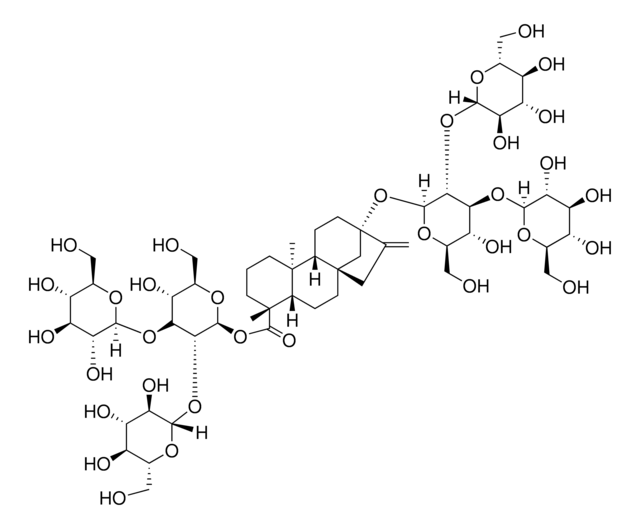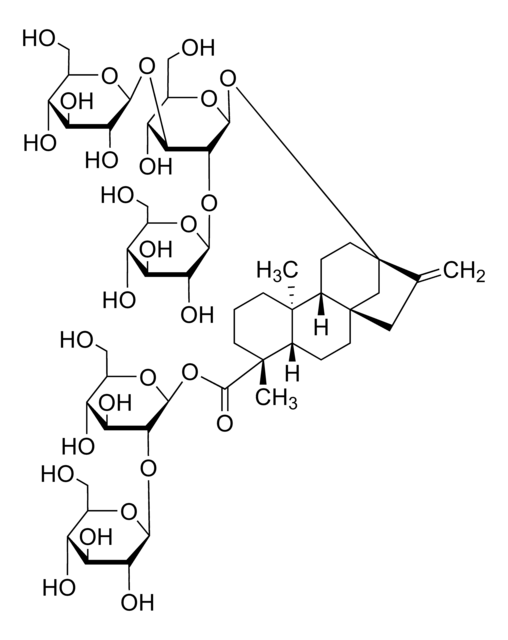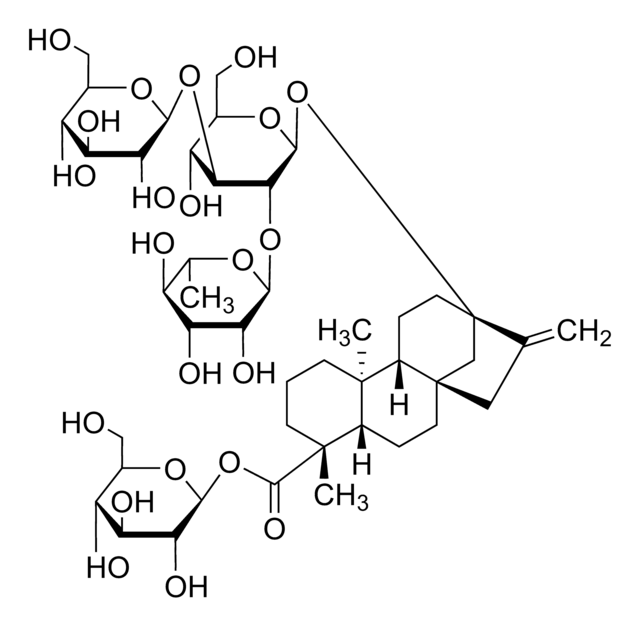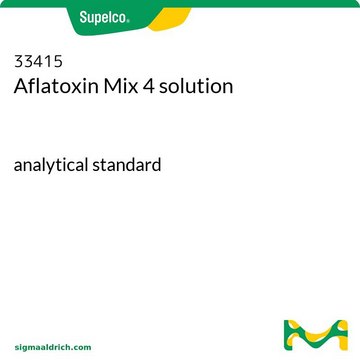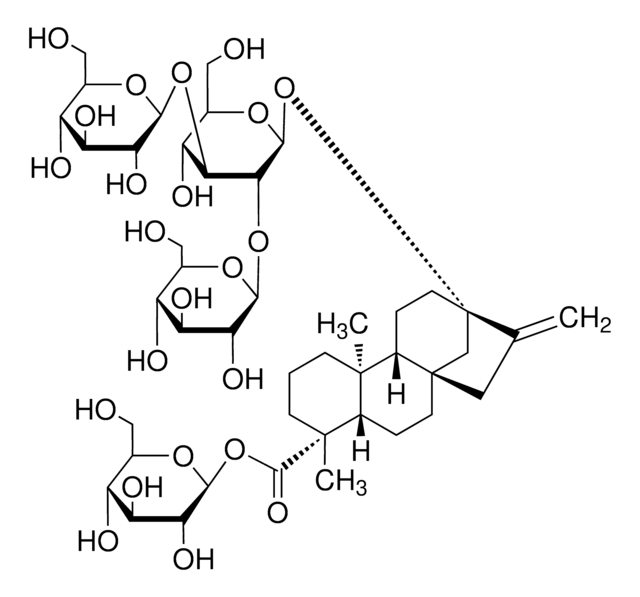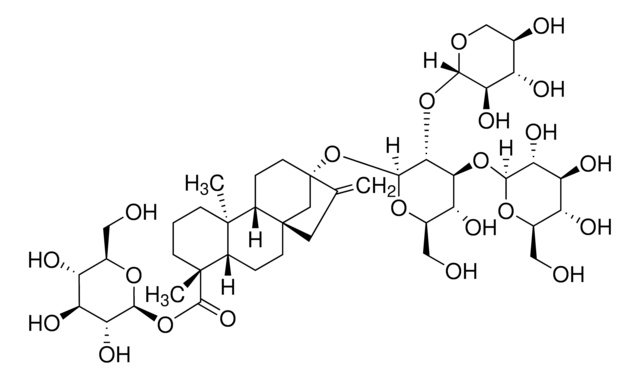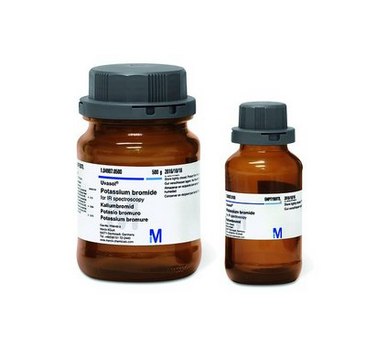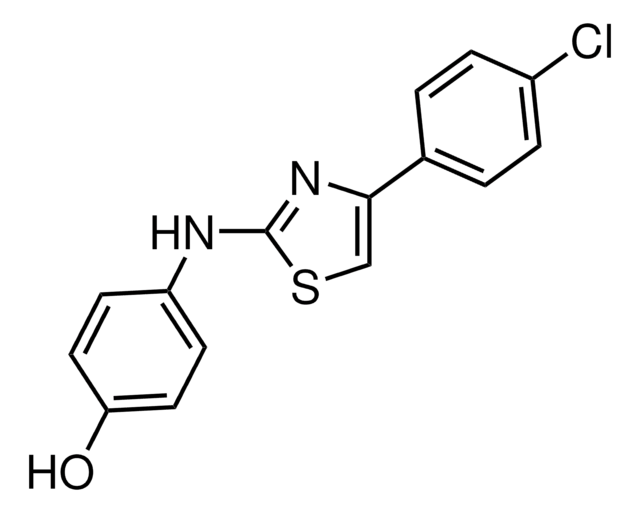30987
Rebaudioside C
analytical standard
Synonym(s):
(4α)-13-[(O-6-Deoxy-α-L-mannopyranosyl-(1→2)-O-[β-D-glucopyranosyl-(1→3)]-β-D-glucopyranosyl)oxy]kaur-16-en-18-oic acid β-D-glucopyranosyl ester, Dulcoside B
About This Item
Recommended Products
grade
analytical standard
Assay
≥95.0% (HPLC)
shelf life
limited shelf life, expiry date on the label
technique(s)
HPLC: suitable
gas chromatography (GC): suitable
impurities
≤12.0% water
application(s)
cleaning products
cosmetics
food and beverages
personal care
format
neat
SMILES string
C[C@@H]1O[C@@H](O[C@H]2[C@@H](O[C@H](CO)[C@@H](O)[C@@H]2O[C@@H]3O[C@H](CO)[C@@H](O)[C@H](O)[C@H]3O)O[C@]45CC[C@H]6[C@]7(C)CCC[C@](C)([C@H]7CC[C@@]6(CC4=C)C5)C(=O)O[C@@H]8O[C@H](CO)[C@@H](O)[C@H](O)[C@H]8O)[C@H](O)[C@H](O)[C@H]1O
InChI
1S/C44H70O22/c1-17-12-43-10-6-22-41(3,8-5-9-42(22,4)40(58)65-38-33(57)30(54)26(50)20(14-46)61-38)23(43)7-11-44(17,16-43)66-39-35(64-36-31(55)28(52)24(48)18(2)59-36)34(27(51)21(15-47)62-39)63-37-32(56)29(53)25(49)19(13-45)60-37/h18-39,45-57H,1,5-16H2,2-4H3/t18-,19-,20-,21-,22?,23?,24-,25-,26-,27-,28+,29+,30+,31+,32-,33-,34+,35-,36-,37+,38?,39+,41-,42-,43-,44+/m1/s1
InChI key
QSRAJVGDWKFOGU-RYUVMFHASA-N
Looking for similar products? Visit Product Comparison Guide
General description
Rebaudioside C is classified under the steviol glycosides group of compounds.
Application
- Soft and alcoholic beverages by high-performance liquid chromatography and tandem mass spectrometry with electrospray ionization (HPLC-ESI-MS/MS).
- Leaves of Stevia rebaudiana (Bertoni) from plants cultivated under chilling stress conditions by untargeted LC-ESI (Orbitrap) MS, LC-ESI coupled with triple quadrupole (QqQ) MS/MS and multivariate data analysis.
- Stevia formulations and sugar-free food products by high performance thin layer chromatography (HPTLC) with ESI-MS, hydrophilic interaction chromatography (HILIC)-HPLC as well as reversed phase (RP)-HPLC.
- Popular beverages by HILIC-MS/MS.
Storage Class Code
11 - Combustible Solids
WGK
WGK 3
Flash Point(F)
Not applicable
Flash Point(C)
Not applicable
Choose from one of the most recent versions:
Already Own This Product?
Find documentation for the products that you have recently purchased in the Document Library.
Our team of scientists has experience in all areas of research including Life Science, Material Science, Chemical Synthesis, Chromatography, Analytical and many others.
Contact Technical Service